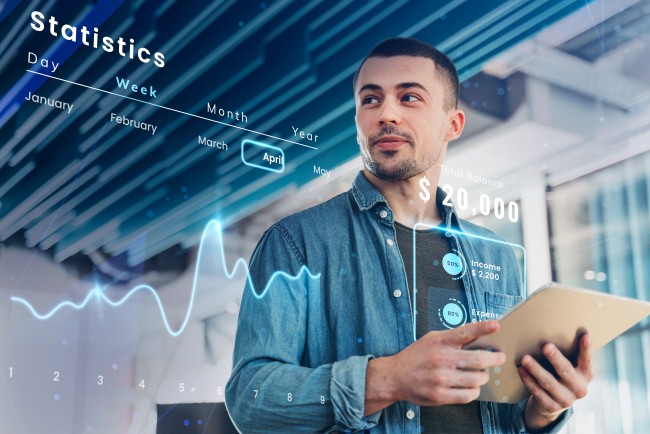The Internet of Things (IoT) connects everyday devices to the internet, letting them communicate, collect data, and automate processes. It’s not just a buzzword – it’s a shift in how machines operate, making life easier and businesses more efficient.
To understand how IoT works, picture a web of smart devices talking to each other without human involvement. Sensors, cloud computing, and fast networks help IoT systems send data between machines, analyze trends, and trigger actions in real-time. Let’s break it down further.
1. Sensors: The Eyes and Ears of IoT
Sensors act like the human senses. They pick up information from the environment, such as temperature, motion, or humidity, and turn it into digital signals. Without sensors, an IoT system is blind.
Different types of sensors exist for various jobs. Temperature sensors detect heat changes in industrial machines or home thermostats. Motion sensors track movement in security systems or smart lighting setups. Humidity sensors help regulate conditions in greenhouses or storage facilities.
Each sensor has a specific task, but all share a common goal: turning physical changes into readable data. Once collected, the data must travel to a processing system. That’s where connectivity comes in.
2. Connectivity: How Devices Talk to Each Other
Once sensors collect data, they send it through a network. This step is like sending a text message—it needs a medium to travel. IoT devices use different communication methods depending on speed, range, and power consumption.
Wired vs. Wireless Communication
Wired connections like Ethernet provide stable, high-speed data transfer, but they limit mobility. Wireless options, on the other hand, allow devices to stay connected without physical restraints. These include:
- Wi-Fi: Common for home automation, but consumes more power.
- Bluetooth Low Energy (BLE): Short-range and energy-efficient, ideal for wearables.
- Zigbee & Z-Wave: Designed for smart home gadgets, offering low power and stable connectivity.
- Cellular (3G, 4G, 5G): Best for long-range communication but consumes more battery.
- LoRa & NB-IoT: Used in industrial IoT, offering long-distance, low-power communication.
Each network type has pros and cons. A smart home thermostat may rely on Wi-Fi, while a remote oil pipeline sensor could use LoRa to send data without needing frequent battery replacements.
3. Data Processing: Making Sense of the Information

Collecting data is one thing; understanding it is another. Raw sensor data is messy and meaningless without proper analysis. IoT systems use cloud computing and edge computing to process information and trigger actions.
Cloud Computing
Cloud platforms store and analyze IoT data. These platforms use machine learning algorithms to detect patterns and predict outcomes. If a factory sensor picks up unusual vibrations in a machine, the cloud can flag it as a potential failure before breakdown occurs. Cloud-based IoT enables remote monitoring, ensuring users can access data from anywhere.
Edge Computing
Sometimes, sending data to the cloud takes too long. In time-sensitive applications, like self-driving cars or industrial automation, devices process data locally. This method, called edge computing, reduces latency. Instead of waiting for a cloud server to decide, an IoT device can react immediately.
For instance, a security camera with edge processing can detect a break-in and trigger an alarm within milliseconds. In contrast, a cloud-only system might take longer, leading to delays in response.
4. Automation: When Devices Act Without Human Help
IoT isn’t just about collecting data – it’s about acting on it. Automation allows devices to make decisions based on sensor inputs, reducing the need for human intervention.
Rule-Based Automation
Simple IoT systems follow predefined rules. If a temperature sensor detects excessive heat, a connected fan turns on automatically. These basic if-then rules handle many smart home and industrial tasks.
AI-Powered Automation
More advanced IoT setups use artificial intelligence (AI) to make smarter decisions. Instead of relying on fixed rules, AI analyzes past data and predicts the best action. A smart thermostat, for example, learns user habits and adjusts temperatures without manual input.
Machine-to-Machine (M2M) Communication
IoT allows machines to talk directly without human oversight. A warehouse can use IoT to track inventory levels. When stock runs low, the system can automatically order more supplies. This real-time response reduces waste and improves efficiency.
5. Security: Keeping IoT Systems Safe
With billions of devices connected, security becomes a major concern. IoT networks can be vulnerable to cyberattacks, making strong security measures essential.
Common IoT Threats
Hackers can exploit weak passwords, unencrypted data, and outdated software. Once inside, they can steal sensitive information, disrupt operations, or even hijack devices for malicious purposes.
Ways to Secure IoT Devices
- Strong Encryption: Scrambles data so only authorized users can read it.
- Regular Updates: Patches security flaws and keeps software secure.
- Network Segmentation: Separates IoT devices from critical business systems to prevent breaches.
- Multi-Factor Authentication (MFA): Adds an extra layer of security beyond passwords.
Security isn’t optional. As IoT expands, protecting devices from cyber threats becomes just as important as the technology itself.
6. The Future of IoT: What’s Next?

IoT is growing fast. More devices, faster networks, and better AI will shape its future. With 5G networks rolling out, real-time data exchange will improve, making smart cities and connected vehicles more practical.
Smarter Homes and Cities
Homes will get even smarter. Imagine a home that not only adjusts the temperature but also orders groceries when supplies run low. Cities will also use IoT to manage traffic, reduce energy waste, and improve public services.
Industrial and Healthcare Innovations
Factories will rely more on IoT for predictive maintenance, reducing downtime and saving costs. In healthcare, wearable sensors will monitor patients in real-time, alerting doctors to potential health issues before they become emergencies.
Ethical and Privacy Challenges
As IoT grows, so do privacy concerns. More data collection means more potential for misuse. Companies must balance innovation with ethical responsibility, ensuring user privacy while reaping the benefits of interconnected devices.
Final Thoughts
IoT changes how machines interact, making them smarter, faster, and more efficient. Sensors capture data, networks transfer it, processing systems analyze it, and automation makes decisions. Security remains a challenge, but with proper safeguards, IoT will continue shaping the future of technology.
